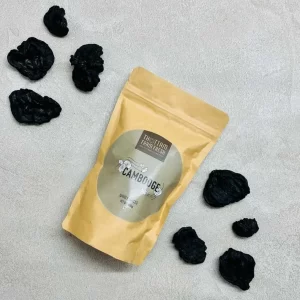The Earthy Spice Profile
This spice profile has a more grounded flavor, reflective of its roots and origins. Essentially the taste it imparts to food is that of the Earth, where all spices come from. Offering a raw, earthy flavor, often aromatic in nature, its characteristic scent makes this profile identifiable. Among Indian spices, prominent examples of spices that are earthy, include cloves, cumin, and coriander.
The Sweet Spice Profile
The sweet profile is representative of how our tongues distinctly sense sugar in food. Sometimes, the sweetness is added to a not-so-sweet dish to create a contrasting taste profile the brain finds exciting. This is why sweet-and-sour food pairings are quite popular. Of course, the relevance of these spices in desserts is imminent, but their use in curries is just as significant. Among Indian spices, prominent examples of spices that are sweet are allspice, star anise, cassia, cinnamon, nutmeg, and cardamom.
The Pungent Spice Profile
The pungent taste is one of dry heat that can be found in herbs and whole spices with a strong, sharp taste. The presence of aromatic volatile oils is behind this phenomenon, and this taste is stimulating and penetrating. It effectively clears moisture and congestion within the body, as well as increases circulation, cleanses the blood, and reduces cholesterol. Indian spices that fall under the pungent classification are strongly flavored, such as ginger, garlic, onion, and mustard.
The Cool Spice Profile
Just as the name suggests, spices belonging to this flavor profile lend a cooling sensation to the tongue. They make your mouth feel refreshed with an intense sensation felt heavily in the mouth and nose. A perfect addition to dishes on a hot, summer day, cool spices alleviate the natural rise in body temperature. The cool sensation is actually a natural consequence of the plant base these spices carry, such as peppermint, spearmint, fennel, and camphor.
The Sour Spice Profile
You know you’re consuming something with a sour spice profile if your mouth puckers up! These spices make your mouth water by bringing about extensive salivation. Sourness livens up dull foods (especially starches), reduces saltiness in food, and balances spicy heat emitted from chili peppers. Sour Indian spices include amchur, tamarind, and spray-dried vinegar powder – they not only counter sweetness but also complement them from time to time depending on the dish.
Keeping these Indian spices and flavor profiles in mind, experiment with your cooking! In order to truly enjoy food holistically, being aware of what effect each spice has on your senses will improve your experience. Bon appetit!





